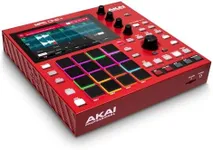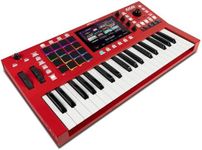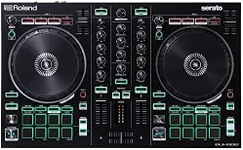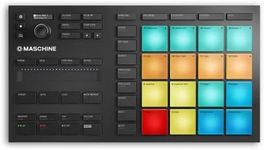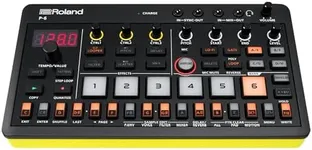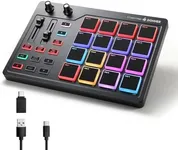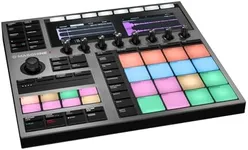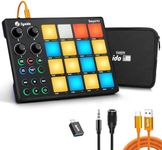Buying Guide for the Best Beat Machines
When choosing a beat machine, it's important to consider your specific needs and how you plan to use the device. Beat machines, also known as drum machines or grooveboxes, are essential tools for music producers, DJs, and musicians who want to create and manipulate beats and rhythms. Understanding the key specifications will help you make an informed decision and find the best fit for your musical style and workflow.Sound QualitySound quality refers to the clarity, richness, and overall fidelity of the sounds produced by the beat machine. This is important because high-quality sounds can make your music more professional and enjoyable to listen to. Sound quality can vary based on the machine's internal sound engine and sample library. If you are producing music for professional release, you might want a machine with high-fidelity sounds. For casual use or live performances, slightly lower sound quality might be acceptable.
PolyphonyPolyphony is the number of individual notes or sounds a beat machine can produce simultaneously. This is important because it affects how complex your beats can be. Machines with higher polyphony can handle more layers of sound without cutting off notes. If you plan to create intricate, multi-layered beats, look for a machine with higher polyphony (e.g., 32 voices or more). For simpler beats, lower polyphony (e.g., 8-16 voices) might be sufficient.
SequencerA sequencer is a feature that allows you to arrange and program beats and patterns over time. This is crucial for creating structured compositions and live performances. Sequencers can vary in complexity, from basic step sequencers to advanced ones with multiple tracks and editing capabilities. If you need detailed control over your beats and want to create complex arrangements, look for a machine with an advanced sequencer. For straightforward beat-making, a simpler sequencer will do.
ConnectivityConnectivity refers to the various input and output options available on the beat machine, such as MIDI, USB, audio outputs, and sync ports. This is important for integrating the machine with other equipment, such as computers, synthesizers, and audio interfaces. If you plan to use the beat machine in a studio setup or live performance, ensure it has the necessary connectivity options. For standalone use, fewer connectivity options might be acceptable.
PortabilityPortability is the ease with which you can transport and use the beat machine on the go. This is important for musicians who travel frequently or perform live. Portable beat machines are typically smaller, lighter, and may have battery power options. If you need a machine that you can easily carry around, look for a compact and lightweight model. For studio use, portability might be less of a concern.
User InterfaceThe user interface is how you interact with the beat machine, including the layout of buttons, knobs, and screens. This is important because a well-designed interface can make the machine easier and more intuitive to use. If you prefer hands-on control and quick access to functions, look for a machine with a user-friendly interface and plenty of physical controls. For those comfortable with digital menus, a machine with a more complex interface might be suitable.
Built-in EffectsBuilt-in effects are audio processing tools like reverb, delay, and distortion that are included in the beat machine. These are important for adding depth and character to your beats without needing external equipment. If you want to enhance your sounds directly on the machine, look for one with a variety of high-quality built-in effects. If you prefer to use external effects processors or software, this feature might be less critical.
